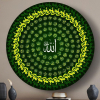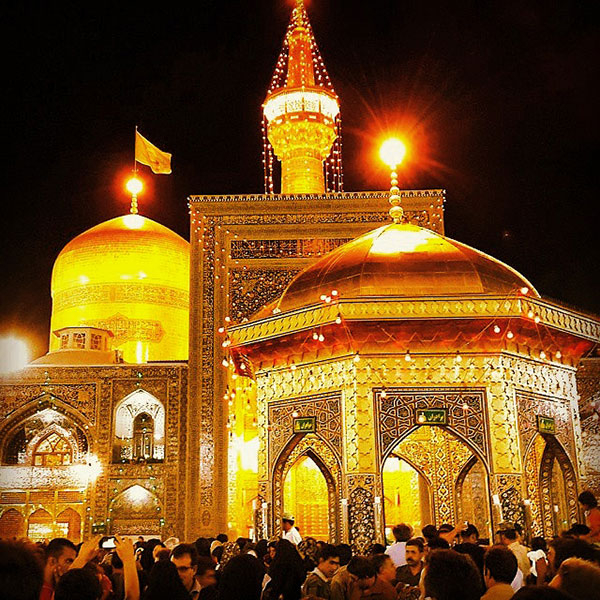The Republic of Maldives
Maldives, officially the Republic of Maldives, is an island nation in the Indian Ocean area, consisting of a double chain of twenty-six atolls. Their atolls encompass a territory spread over roughly 90,000 square kilometers, making the country one of the world's most geographically dispersed. Its population was about 328,536 inhabits in 2012. Maldives is the smallest Asian country in both population and land area. The official and common language is Dhivehi, an Indo-Aryan language having some similarities with Elu, the ancient Sinhalese language. English is used widely in commerce and increasingly in government schools. And the currency is Maldivian rufiyaa (MVR). From the mid-sixteenth century, the Maldives was dominated by colonial powers: Portugal, the Netherlands and Britain. The islands gained independence from the British Empire in 1965, and in 1968 became a republic ruled by a president and an authoritarian government.

The capital and largest city Malé, located at the southern edge of North Malé Atoll. The capital, Malé, is about 600 kilometres (370 mi) south-west of India and 750 kilometres (470 mi) south-west of Sri Lanka. Malé is one of the Maldives' administrative divisions and, traditionally, it was the "King's Island" where the ancient royal dynasties were enthroned. Maldives has two distinct seasons; dry season (northeast monsoon) and wet season (southwest monsoon), with the former extending from January to March and the latter from mid-May to November. The Maldives climate provides warm, tropical weather all year round, even during the wet season the temperature averages around the high twenties and low thirties. The dry season associated with the winter northeastern monsoon and the rainy season which brings strong winds and storms.

Malé, the capital of the Maldives
The Maldives has twenty-six natural atolls and few island groups on isolated reefs, all of which have been divided into twenty-one administrative divisions .Each atoll is administered by an Atoll Chief appointed by the President. The Ministry of Atoll Administration and its Northern and Southern Regional Offices, Atoll Offices and Island Offices are collectively responsible to the President for Atolls Administration. The administrative head of each island is the Island Chief, appointed by the President. The Island Chief's immediate superior is the Atoll Chief.
The Maldives has 7 provinces each consisting of the following administrative divisions (the capital Malé is its own administrative division):
Mathi-Uthuru Province; consists of Haa Alif Atoll, Haa Dhaalu Atoll and Shaviyani Atoll.
Uthuru Province; consists of Noonu Atoll, Raa Atoll, Baa Atoll and Lhaviyani Atoll.
Medhu-Uthuru Province; consists of Kaafu Atoll, Alifu Alifu Atoll, Alifu Dhaalu Atoll and Vaavu Atoll.
Medhu Province; consists of Meemu Atoll, Faafu Atoll and Dhaalu Atoll.
Medhu-Dhekunu Province; consists of Thaa Atoll and Laamu Atoll.
Mathi-Dhekunu Province; consists of Gaafu Alifu Atoll and Gaafu Dhaalu Atoll.
Dhekunu Province; consists of Gnaviyani Atoll and Addu City.

Largest cities or towns of Maldives (2012)
With an average ground level elevation of 1.5 metres (4 ft 11 in) above sea level, it is the planet's lowest country. It is also the country with the lowest natural highest point in the world, at 2.4 metres (7 ft 10 in). Future inundation of the Maldives due to rising sea levels is of great concern to its people, motivating the government to pledge becoming a carbon-neutral country by 2019.
On 26 December 2004, following the 2004 Indian Ocean earthquake, the Maldives were devastated by a tsunami. Only nine islands were reported to have escaped any flooding, while fifty-seven islands faced serious damage to critical infrastructure, fourteen islands had to be totally evacuated, and six islands were destroyed. A further twenty-one resort islands were forced to close because of serious damage. The total damage was estimated at more than US$400 million, or some 62% of the GDP. 102 Maldivians and 6 foreigners reportedly died in the tsunami. The destructive impact of the waves on the low-lying islands was mitigated by the fact there was no continental shelf or land mass upon which the waves could gain height. The tallest waves were reported to be 14 feet (4.3 m) high.

The Islamic Centre, housing the mosque Masjid-al-Sultan Mohammed Thakurufaanu-al-A'z'am
After the long Buddhist period of Maldivian history, Muslim traders introduced Islam. Maldivians converted to Islam by the mid-12th century. There is a Plaque in Juma Mosque in Malé, on which Yusuf Tabrizi's name is written. Yusuf Tabrizi was an Iranian who is said to have converted Maldives in 12th century AD to Islam. The conversion to Islam is mentioned in the edicts written in copper plates from the end of the 12th century AD.

The famous Moroccan traveller Ibn Batutta, who visited the Maldives in the 14th century, wrote how a Moroccan, one Abu Barakat the Berber, was believed to have been responsible for spreading Islam in the islands. Even though this report has been contested in later sources, it does explain some crucial aspects of Maldivian culture. For instance, historically Arabic has been the prime language of administration there, instead of the Persian and Urdu languages used in the nearby Muslim states. Another link to North Africa was the Maliki School of jurisprudence, used throughout most of North-Africa, which was the official one in the Maldives until the 17th century.
Some scholars have suggested the possibility of Ibn Battuta misreading Maldive texts, and have posited another scenario where this Abu Barakat might have been a native of Berbera, a significant trading port on the north western coast of Somalia. This scenario would also help explain the usage of the Arabic language and the predominance of the Maliki School on the islands.
The islands has had a long history of Sufic orders, as can be seen in the history of the country such as the building of tombs. Other aspects of Tassawuf, such as ritualized dhikr ceremonies called Maulūdu (Mawlid)—the liturgy of which included recitations and certain supplications in a melodical tone—existed until very recent times. These Maulūdu festivals were held in ornate tents specially built for the occasion. At present Sunni Islam is the official religion of the entire population, as adherence to it is required for citizenship.
Since the 12th century AD there were also influences from Arabia in the language and culture of the Maldives because of the conversion to Islam and its location as a crossroads in the central Indian Ocean. This was due to the long trading history between the Far East and the Middle East. Somali travelers discovered the island for gold in the 13th century, before the Portuguese. Their brief stay later ended in a bloody conflict known by the Somalis as "Dagaal Diig Badaaney" in 1424.

The Presidential Palace of Malé, Maldives
Maldives is a presidential republic, with the President as head of government and head of state. The President heads the executive branch and appoints the cabinet which is approved by the People's Majlis (Parliament). Following the introduction of a new constitution in 2008, direct elections for the President take place every five years, with a limit of two terms in office for any individual. The current President is Abdulla Yameen. Members of the unicameral Majlis serve five-year terms, with the total number of members determined by atoll populations. At the 2009 election, members were elected. The People's Majlis, located in Male, houses members from all over the country.
The republican constitution came into force in 1968, and was amended in 1970, 1972, and 1975. On 27 November 1997 it was replaced by another Constitution assented to by the President Gayoom. This Constitution came into force on 1 January 1998. All stated that the president was the Head of State, Head of Government and the Commander-in-Chief of the Armed Forces and the Police of the Maldives. A third Constitution was ratified on 7 August 2008, which separated the judiciary from the head of state. The Maldives ranks high on the list of governments that restrict religious freedom.

The white sandy beaches of Maldives
The Maldivian government began an economic reform program in 1989, initially by lifting import quotas and opening some exports to the private sector. Subsequently, it has liberalized regulations to allow more foreign investment. Real GDP growth averaged over 7.5% per year for more than a decade. Today, the Maldives' largest industry is tourism, accounting for 28% of GDP and more than 60% of the Maldives' foreign exchange receipts. Fishing is the second leading sector. Agriculture and manufacturing continue to play a lesser role in it, constrained by the limited availability of cultivable land and the shortage of domestic labour. New industries that have since emerged include printing, production of PVC pipes, brick making, marine engine repairs, bottling of aerated water, and garment production.

The resort island of Landaa Giraavaru (Baa atoll)


















